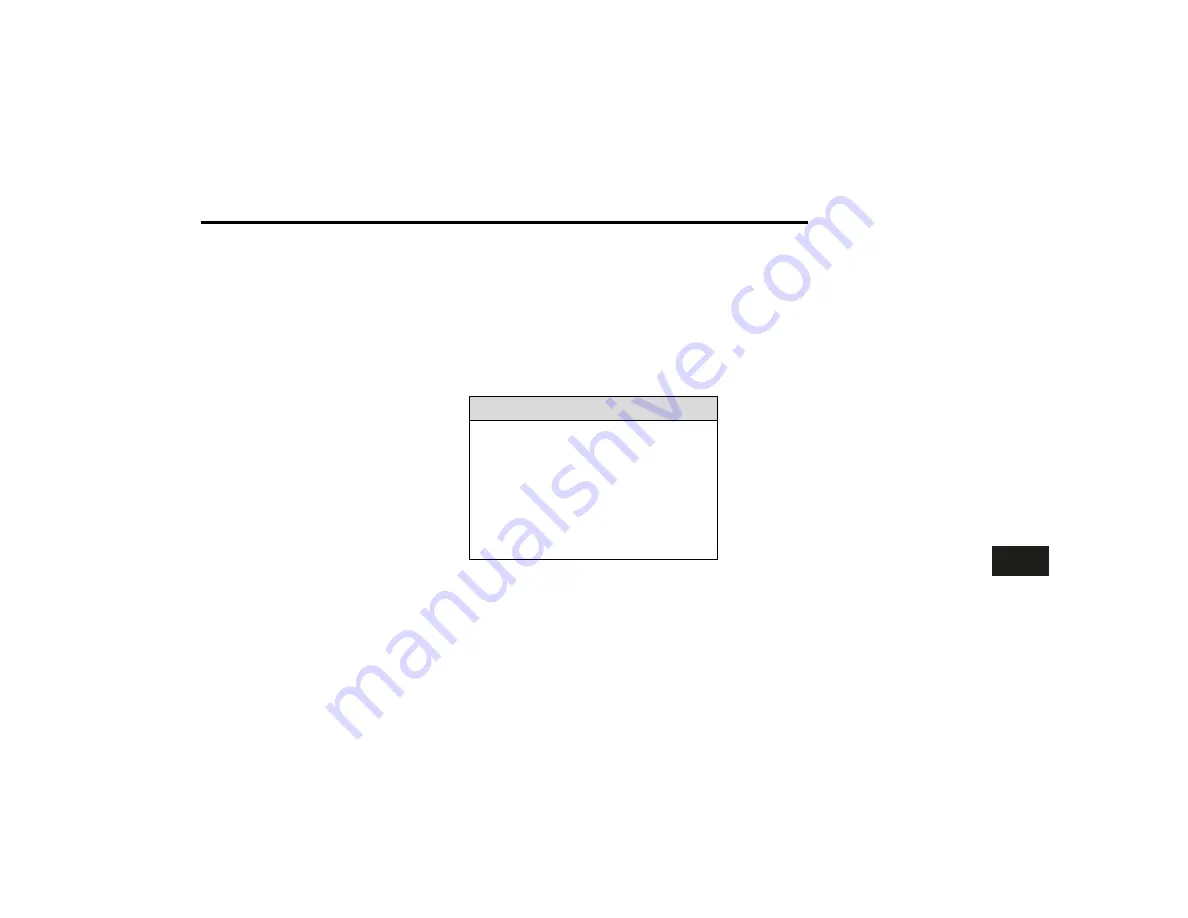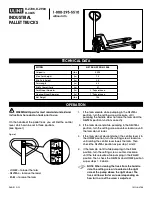
Please review these recommendations for using
Organic Additive Technology (OAT) engine coolant that
meets the requirements of the manufacturer Material
Standard MS.90032. When adding engine coolant:
●
We recommend using Mopar® Antifreeze/Coolant
10 Year/150,000 Mile (240,000 km) Formula OAT
that meets the requirements of the manufacturer
Material Standard MS.90032.
●
Mix a minimum solution of 50% OAT engine coolant
that meets the requirements of the manufacturer
Material Standard MS.90032 and distilled water.
Use higher concentrations (not to exceed 70%) if
temperatures below −34°F (−37°C) are anticipated.
Please contact an authorized dealer for assistance.
●
Use only high purity water such as distilled or
deionized water when mixing the water/engine
coolant solution. The use of lower quality water will
reduce the amount of corrosion protection in the
engine cooling system.
NOTE:
●
It is the owner's responsibility to maintain the proper
level of protection against freezing according to the
temperatures occurring in the area where the vehicle
is operated.
●
Some vehicles require special tools to add coolant
properly. Failure to fill these systems properly could
lead to severe internal engine damage. If any coolant
is needed to be added to the system, please contact
an authorized dealer.
●
Mixing engine coolant types is not recommended
and can result in cooling system damage. If HOAT
and OAT coolant are mixed in an emergency, have
an authorized dealer drain, flush, and refill with
OAT coolant (conforming to MS.90032) as soon as
possible.
Cooling System Pressure Cap
The cap must be fully tightened to prevent loss of
engine coolant (antifreeze), and to ensure that engine
coolant will return to the radiator from the coolant
expansion bottle/recovery tank (if equipped).
The cap should be inspected and cleaned if there is
any accumulation of foreign material on the sealing
surfaces.
WARNING!
●
Do not open a hot engine cooling system. Never
add engine coolant (antifreeze) when the engine
is overheated. Do not loosen or remove the cap to
cool an overheated engine. Heat causes pressure
to build up in the cooling system. To prevent
scalding or injury, do not remove the pressure cap
while the system is hot or under pressure.
●
Do not use a pressure cap other than the one
specified for your vehicle. Personal injury or engine
damage may result.
Disposal Of Used Coolant
Used ethylene glycol-based coolant (antifreeze) is a
regulated substance requiring proper disposal. Check
with your local authorities to determine the disposal
rules for your community. To prevent ingestion by
animals or children, do not store ethylene glycol-based
coolant in open containers or allow it to remain in
puddles on the ground, clean up any ground spills
immediately. If ingested, seek emergency assistance
immediately.
Checking Coolant Level — 3.6L Engine
The level of the coolant in the pressurized coolant
bottle should be between the “MIN” and “MAX” range
on the bottle when the engine is cold.
The radiator normally remains completely full, so
there is no need to remove the cap unless checking
for coolant freeze point or replacing engine coolant
(antifreeze). Advise your service attendant of this.
As long as the engine operating temperature is
satisfactory, the coolant bottle need only be checked
once a month. When additional engine coolant is
needed to maintain the proper level, it should be added
to the coolant bottle. Do not overfill.
Cooling System Notes
NOTE:
When the vehicle is stopped after a few miles/
kilometers of operation, you may observe vapor coming
from the front of the engine compartment. This is
normally a result of moisture from rain, snow, or
high humidity accumulating on the radiator and being
vaporized when the thermostat opens, allowing hot
engine coolant (antifreeze) to enter the radiator.
If an examination of your engine compartment shows
no evidence of radiator or hose leaks, the vehicle may
be safely driven. The vapor will soon dissipate.
●
Do not overfill the coolant expansion bottle.
●
Check the coolant freeze point in the radiator and in
the coolant expansion bottle. If engine coolant needs
SERVICING AND MAINTENANCE 315
8




































